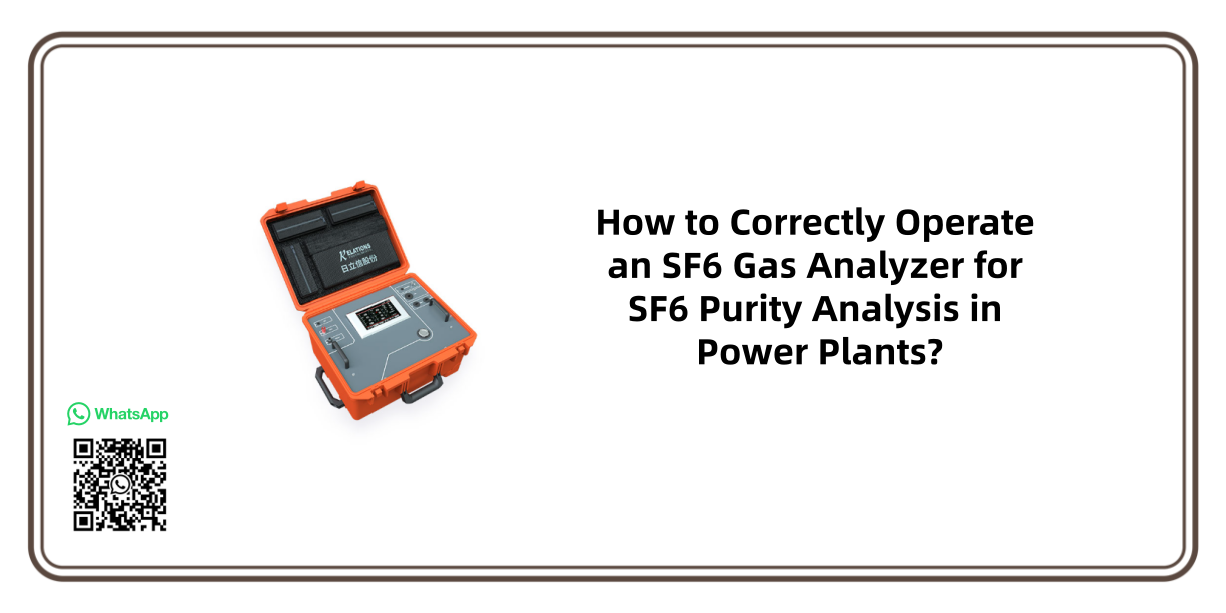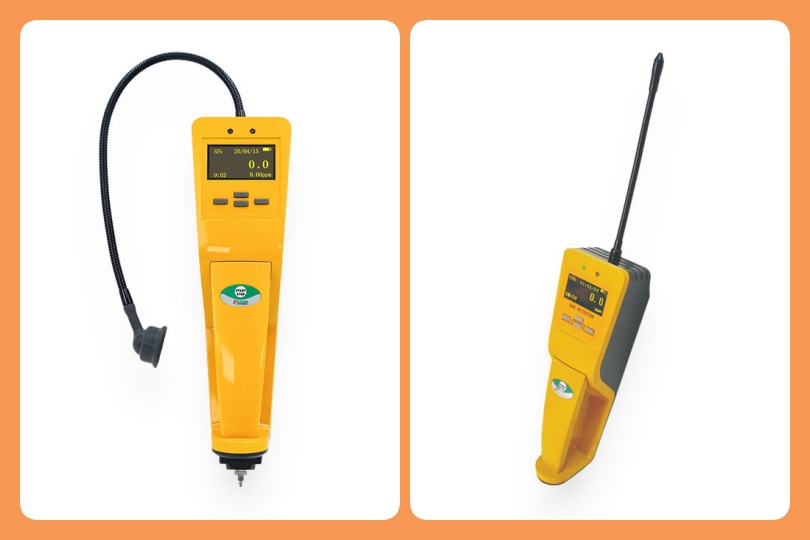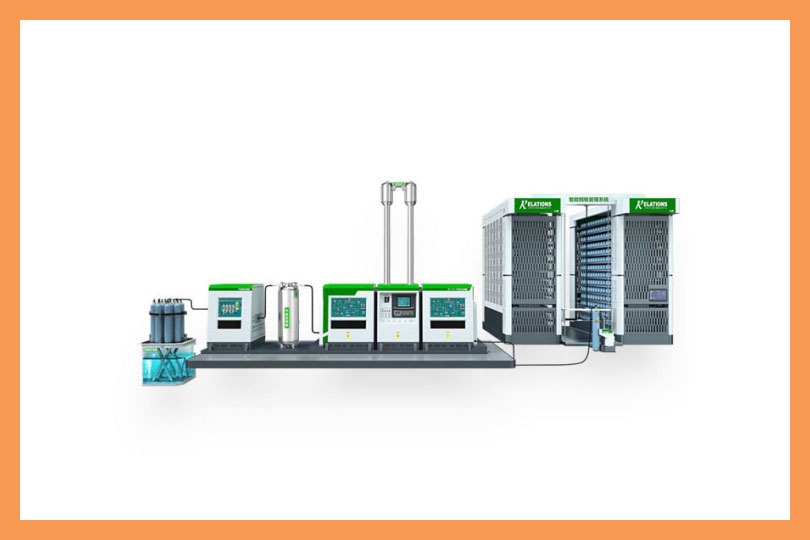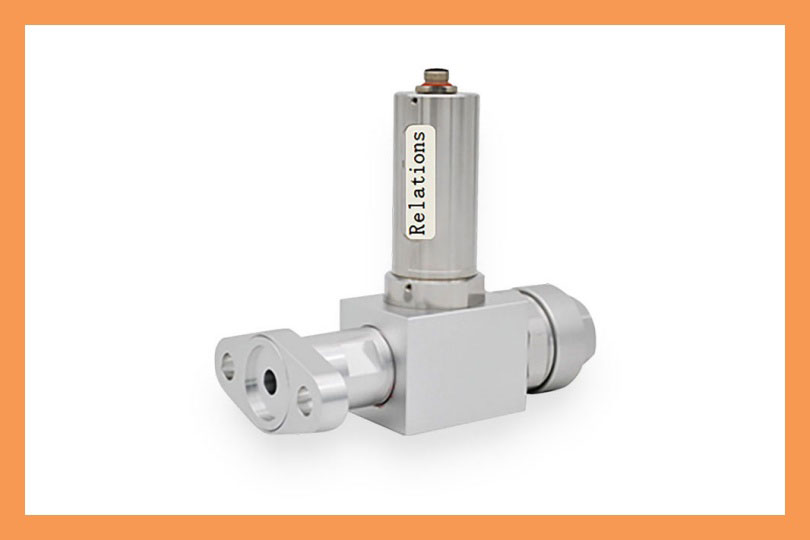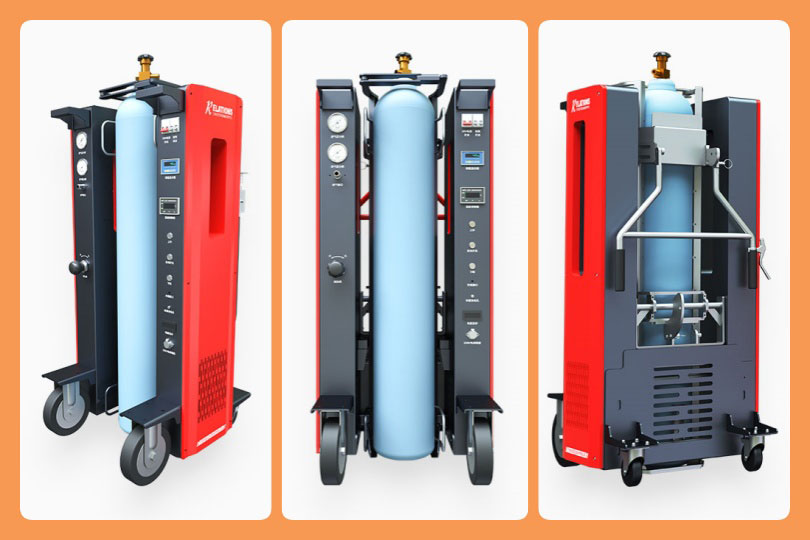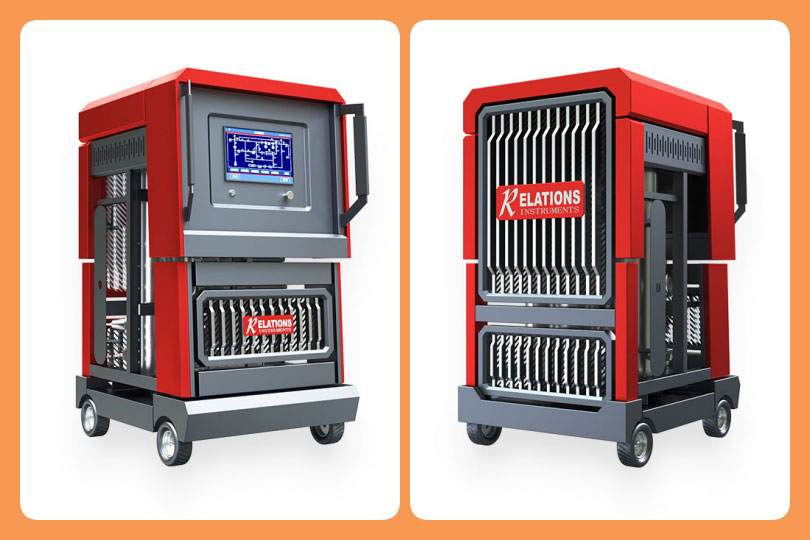Need Help: Providing Innovative and Sustainable Solutions.
Office Hours: 08:30am-6:00pm
How to Correctly Operate an SF6 Gas Analyzer for SF6 Purity Analysis in Power Plants?
Date
2025-10-31
[email protected]
Website
www.sf6gasdetector.com
Get Solutions And Quotes
How to Correctly Operate an SF6 Gas Analyzer for SF6 Purity Analysis in Power Plants?
Correct operation of an SF6 gas analyzer for SF6 purity analysis is critical for power plants—it ensures accurate data (to meet IEC 60480 standards, ≥99.8% SF6 purity for high-voltage equipment), protects GIS (Gas Insulated Switchgear) and transformers from insulation failure, and avoids non-compliance with environmental regulations (e.g., EU F-Gas Regulation). This guide breaks down the process into 4 actionable stages, with clear dos and don’ts for on-site application.
1. Pre-Operation Preparation: Eliminate Interference & Ensure Accuracy
Prep work is the foundation of reliable SF6 purity analysis—skipping these steps leads to false readings or sensor damage. Focus on three key tasks:
1.1 Calibrate the SF6 Gas Analyzer (Non-Negotiable Step)
Calibration ensures the analyzer’s readings match real-world SF6 purity. Use certified 99.99% pure SF6 standard gas (compliant with ISO 6142) and follow these rules:
- Connect the standard gas cylinder to the analyzer’s inlet via a clean, dry sampling tube.
- Set the gas flow rate to 50–100 mL/min (per manufacturer specs) and let it flow for 2–3 minutes.
- Confirm the analyzer’s display matches the standard gas concentration (99.99%)—if not, adjust the sensor until it aligns.
Note: Calibrate within 24 hours of use; expired calibration (over 6 months) invalidates results.
1.2 Inspect Analyzer & Sampling Tools
Faulty equipment ruins analysis. Check these components:
- Power supply: Ensure battery charge is ≥80% (for portable models) or AC power is stable—sudden shutdowns mid-test waste time.
- Sampling tube: Look for cracks, kinks, or debris (e.g., dust, oil). Replace damaged tubes; use compressed dry air to blow out blockages if needed.
- Sensor inlet: Wipe with a lint-free dry cloth to remove residue—oil or dirt on the sensor skews purity readings.
1.3 Prepare Personal Protective Equipment (PPE)
Power plant environments demand safety. Wear:
- Nitrile gloves: Prevent hand oils from contaminating the sampling port (latex gloves may react with SF6).
- Safety goggles: Shield eyes from accidental gas sprays when opening equipment valves.
- Insulated shoes: Optional but recommended when working near live high-voltage equipment.
2. On-Site Sampling: Avoid Air Ingress (Key to Accurate Purity Data)
Sampling is the most error-prone stage—air (O₂, N₂) ingress lowers measured purity, leading to wrong judgments. Follow these steps:
2.1 Choose the Right Sampling Point
For power plant equipment (GIS, transformers, circuit breakers), select:
- The dedicated SF6 sampling valve (usually 1/4-inch needle valve) on the equipment’s gas chamber.
- Avoid valves that haven’t been used in 6+ months—they may trap air in the valve core.
Pro tip: Mark sampling points with labels (e.g., “GIS Bay 3 Sampling Valve”) to save time on future tests.
2.2 Purge the Sampling Line (Critical for Removing Air)
Air in the sampling tube is the top cause of false low-purity readings. Do this:
- Connect the SF6 analyzer’s sampling tube to the equipment valve.
- Slowly open the valve (1/4 turn) and let SF6 flow through the tube for 30–60 seconds.
- Confirm no air bubbles are visible in the tube (for transparent tubes)—bubbles mean incomplete purging.
2.3 Control Sampling Flow Rate
Stable flow ensures the sensor fully processes the gas:
- Adjust the SF6 gas analyzer’s flow control knob to 30–80 mL/min (check the manual for your model’s ideal range).
- Avoid high flow rates (>100 mL/min)—they cause the sensor to miss trace impurities; low rates (<20 mL/min) prolong analysis.
3. Execute SF6 Purity Analysis: Wait for Stable Readings & Verify Compliance
Once sampling is done, focus on data reliability and standard alignment:
3.1 Let the Sensor Warm Up & Stabilize
Most SF6 analyzers need time to reach optimal performance:
- Wait 3–5 minutes for the sensor to warm up (the analyzer will show a “ready” indicator when done).
- Do not record data until the reading stops fluctuating—variation should be ≤0.05% over 1 minute (e.g., from 99.92% to 99.91%).
3.2 Record & Validate Results
Compare data to industry standards and log key details:
- Pass/fail check: If SF6 gas purity is ≥99.8% (per IEC 60480), mark the equipment as “compliant”; if below, flag it for gas replacement.
- Log information: Record analysis time, equipment ID (e.g., “GIS-2023-05”), sampling point, measured purity, and analyzer serial number.
Why log? It simplifies safety audits and helps track long-term gas quality trends.
3.3 Avoid On-Site Interference
Power plants have strong electromagnetic fields—prevent signal distortion:
- Keep the SF6 analyzer at least 1 meter away from live components (e.g., energized busbars, transformers).
- Do not use the analyzer near high-temperature sources (e.g., generator exhausts)—heat damages the sensor.
4. Post-Operation Closure: Protect Equipment & Comply with Environmental Rules
Proper closure extends analyzer life and reduces SF6 emissions (a potent greenhouse gas):
4.1 Flush the Sampling System
Residual SF6 in the tube contaminates future tests. Flush it:
- Disconnect the tube from the equipment valve and connect it to a clean nitrogen cylinder (99.99% pure).
- Let nitrogen flow at 50 mL/min for 1–2 minutes to clear residual SF6.
4.2 Store the Analyzer Correctly
- Turn off the SF6 gas analyzer and remove the battery (if storing for >1 month) to prevent corrosion.
- Store in a dry, cool cabinet (10–30°C, humidity <60%) with a dust cap on the sampling inlet.
- Keep it away from corrosive substances (e.g., solvents, battery acid) in the power plant workshop.
4.3 Dispose of Waste Gas Properly
Never release SF6 into the air—follow F-Gas Regulation requirements:
- Collect purged SF6 in a gas recovery bag (rated for SF6 compatibility).
- Hand over the bag to a licensed waste gas treatment company for recycling or destruction.
Realize The Recycling Of Sf6 Gas
